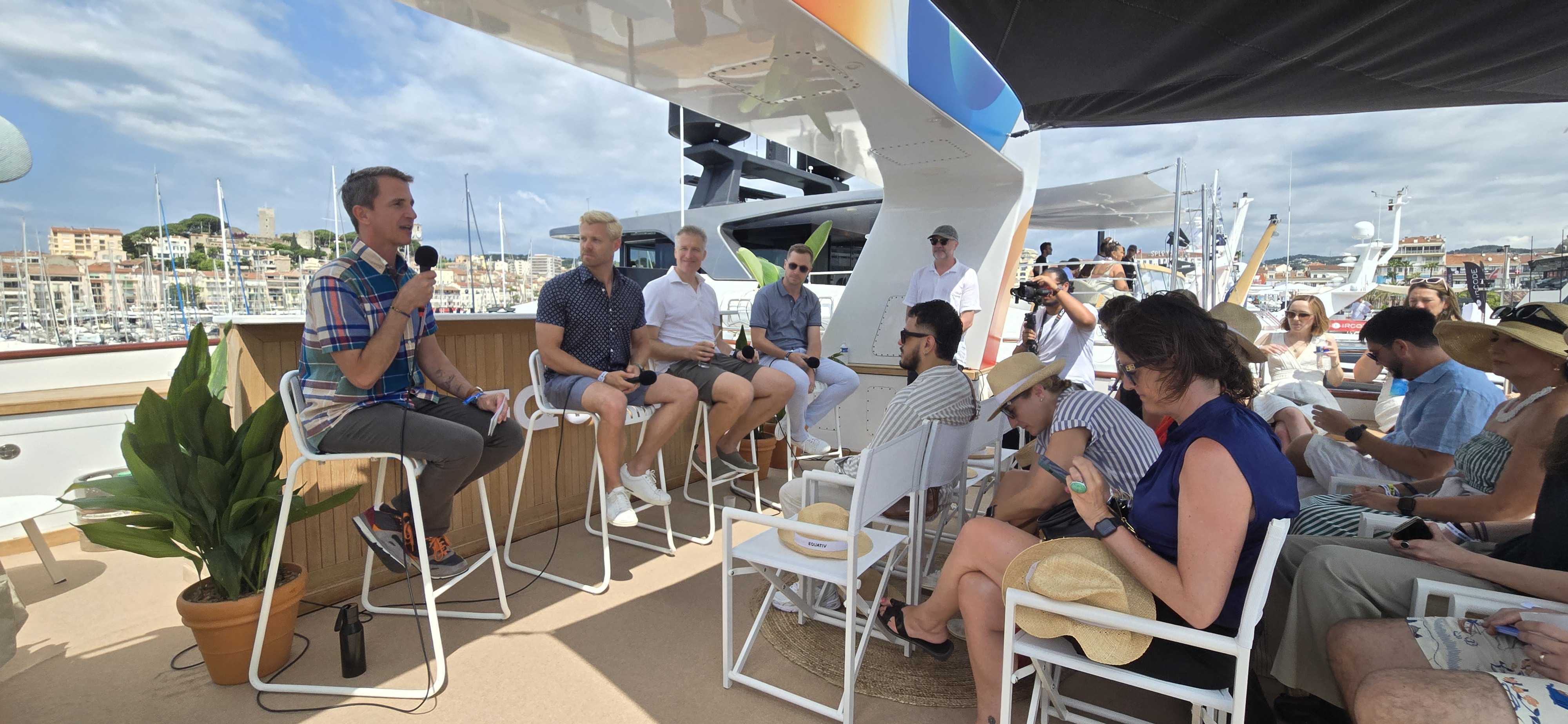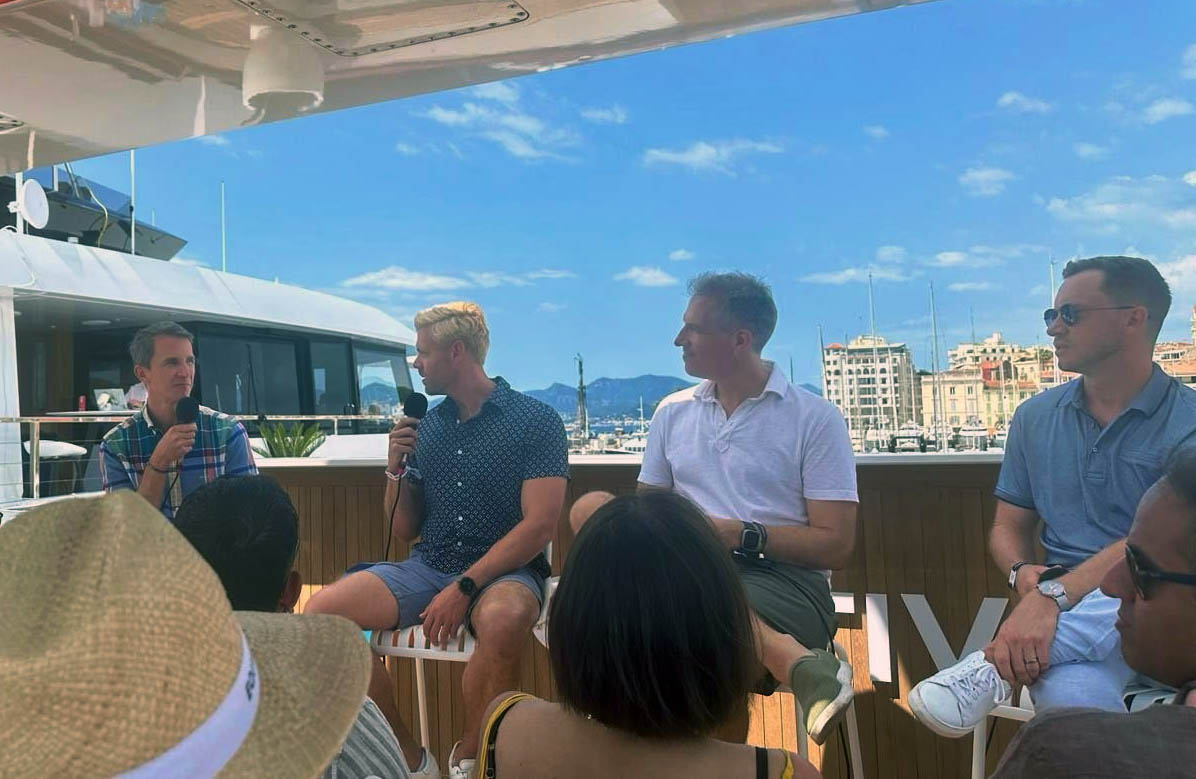Discover key insights from Cannes 2025’s most candid AI panel, exploring how AI is reshaping creativity, contextual targeting, and sustainability in advertising—with expert takeaways from Scope3, Classify, and Kepler Group.
Artificial intelligence was the hottest buzzword around the Croisette this year.
Given the impact it’s already had on the advertising industry, we set out to cut through the hype with an honest, thought-provoking, and humorous conversation focused on where AI is heading and what the industry should prioritize as it continues to evolve.
Moderated by Curt Larson, our Chief Innovation Officer, the panel highlighted three voices offering different perspectives: Brendan Norman, CEO and Co-Founder of Classify; Brian O’Kelley, CEO and Co-Founder of Scope3; and Michael Kania, Associate Vice President of Marketing at Kepler Group.

Together, they offered insights into where AI is delivering results, where there’s still progress to be made, and what we should all be paying attention to. The group even introduced a new metric inspired by the rosé synonymous with the Cannes Lions: Return on Sustainable Efficiency (ROSE).
The session kicked off with panelists introducing themselves by sharing the most exciting thing they’re focused on in AI at the moment.
With the conversation flowing, Curt then raised a key question many in the industry are grappling with.
This question dove into the tension between AI’s growing footprint and the industry’s sustainability goals, a space where Scope3 is actively working to pioneer solutions.
Brian candidly acknowledged a common hesitation among large companies when offered tools to measure their AI carbon footprint: it wasn’t that they weren’t interested, but they weren’t sure of what to do with the information.
“We built an entire AI measurement platform, and we went to some of the biggest companies in the world to share it. And they said, ‘We don't want to know. We are so committed to AI that we're scared that you're going to tell us we have a problem, and we don't want to not do AI,’” he said.
To address this, Scope3 began embedding carbon measurement into their agentic AI platform by design, helping companies access tools that are both efficient and sustainable. And he shared a few key insights they’ve learned along the way:
This sparked a transition into the question around how AI can be reimagined to better serve marketers.
One such area is contextual targeting, which may seem like old news. But Brendan argued that AI is unlocking its true potential for the first time. With traditional methods relying on matching keywords and broad categories, many advertisers still struggle with overblocking and concerns about brand safety.
Traditional keyword-based targeting often blocks valuable content and limits reach. Classify’s AI-powered ContentGraph changes that by focusing on brand-safe AI targeting:
“We’re building a contextual curation platform, and we took a very different approach in terms of looking at the sentiment of the content and are able to really quickly build these contextual segments just based on content,” he said. As the conversation shifted to creative work—especially relevant at Cannes, where creativity is celebrated—the panel didn’t shy away from the friction AI has caused.
Michael addressed the creative community’s mixed feelings about AI head-on. He pointed out that Kepler’s approach is to use AI to amplify and enhance human creativity, not replace it.
“We built a creative team from scratch,” he said. “They’re not afraid of AI. They’re exploring it. And they’re doing amazing things faster and more affordably.”
His takeaway? AI is a tool, and designers who remain curious and experimental will have an edge.

To wrap things up, the panel reflected on how fast AI has evolved and what’s next. Pointing out the quick evolution of AI since ChatGPT’s public debut in 2023, Michael emphasized the long-term value of AI is in the tangible outcomes it delivers for clients. He noted that clients will increasingly prioritize results over buzzwords, saying, “Let’s rebuild technology that actually makes a difference for our clients.”
When asked for his takeaway, Brian drew parallels between the current AI wave and the early days of the internet, noting the rapid acceleration of progress: “We’ve done in AI in 24 months what took 6 years in the dot-com boom.”
While AI may remain a hot topic at industry events like Cannes, he predicted a more mature future marked by better tools, clearer measurement, and a stronger focus on sustainability.
And Brendan closed with a nod to AI’s role in solving long-standing inefficiencies in adtech. For him, the key to the future is using AI to power smarter, more sustainable strategies that benefit both advertisers and audiences.
At an event flooded with AI hype, this panel stood out for its honesty, expertise, and true focus on sustainability as a core business driver. AI is rapidly becoming foundational to how we plan, buy, create, and optimize advertising, but the systems we build must be both impactful and ethical.
And, just like great advertising, people are at the heart of it all. AI must remain human-centered: simple, sustainable, and meaningful.
Our take? This is just the beginning.
Watch the full replay:

Summary
As Director of Marketing and Communications at Equativ, Amy leads the company’s owned content, social media, and public relations strategies. Collaborating with stakeholders across the organization, she writes on topics ranging from Equativ’s product innovations to broader industry trends.